Aldwell-Schachter Chapter 20
Click on a musical example for playback
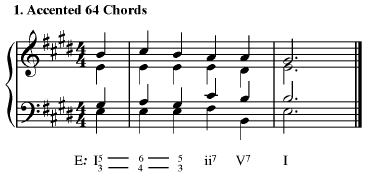
All accented 6/4 chords work more or less the same way as the cadential 6/4. The same principle that informs the cadential 6/4 can be used with other roots as well. Here a “IV 6/4” is functioning as a tonic with a double accented upper neighbor tone.
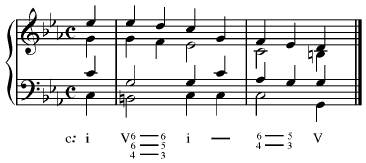
This progression involves the use of a V6/5, which is approached via 6/6/4, which then resolves to 6/5/3. This is a rather typical progression in minor. It is followed by yet another accented 6/4 on ‘i’, as above.
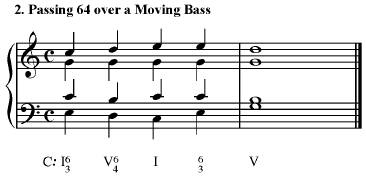
This is very nearly a vii6—the difference is all of one note, and there isn’t any functional difference. The “V6/4” here has all the root integrity of the vii6, which is to say, no root integrity at all.
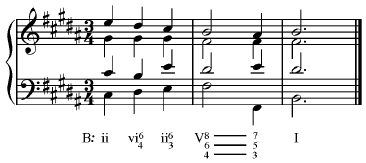
Here a “vi6/4” acts as a passing tone between ii and ii6; it is really acting much as a I6 might act under similar circumstances.
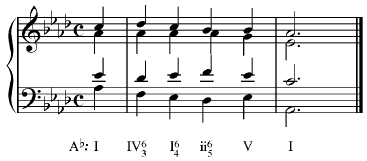
Passing “I6/4” between IV6 and ii6/5. As Aldwell-Schachter put it, this is a VERY FREQUENT progression.
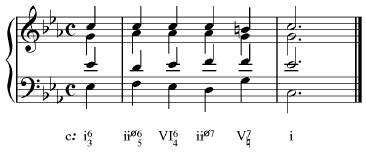
Passing “VI6/4” between ii6/5 and ii7 in minor. Notice how this allows for incredibly smooth voice leading, which makes clear just how contrapuntal all of these progressions really are.
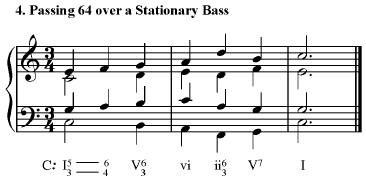
Here is a passing “IV6/4” which works over a stationary bass, allowing a contrapuntal motion to V6 and hence to vi. It is interesting to note that here the “leading tone” of the V6/3 has been doubled, but in this instance it isn’t really acting as a leading tone (not moving to I) so it isn’t bothersome. A leading tone that doesn’t lead isn’t a leading tone.
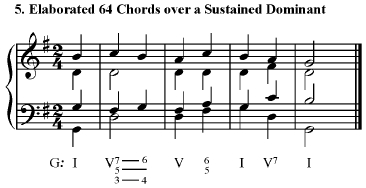
This looks almost like anarchy; a “I6/4” connecting a V7 to a V! The V7 never resolves, it would appear. But actually it does—in the next measure. The trick here is to realize that we are hearing an expansion of V7 that is working because of the ear’s ability to recognize contrapuntal motion that doesn’t have a strong harmonic component.
. 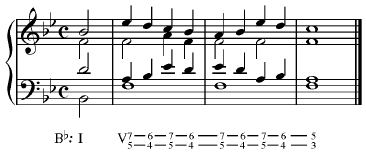
Along similar lines, this expanded progression shows elaborated 6/4 chords over a sustained bass. The figure has been written twice—the first time with a stepwise descending soprano, and the second time using a characteristic voice-exchange technique.
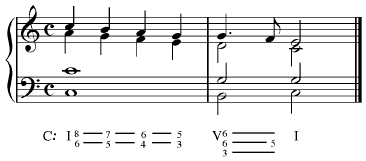
This could really be thought of as a long expanded tonic. The actual figures are given in the analysis, although they seem a little silly under the circumstances.
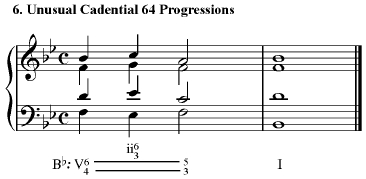
An interpolated ii6 here expands the cadential 6/4 just a bit. The analysis style used here helps make clear the interpolation, by placing the ‘ii6/3’ at a different vertical level from the cadential 6/4. Parentheses around the ii6/3 can also have the same effect.
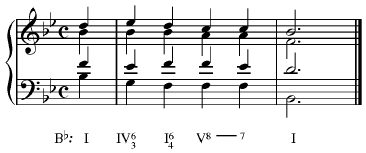
This looks for all the world like an improperly written cadential 6/4, with the 6/4 on a weak beat. But it doesn’t sound like a cadential 6/4. That is because this is really a passing chord, created by contrapuntal motion. In that aspect it is almost identical to the earlier progression IV6/3-“I6/4”-ii6/5.
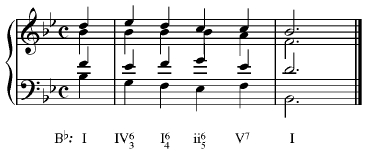
Just to clarify, here is the same progression as the one above, using IV6/3-“I6/4”-ii6/5.
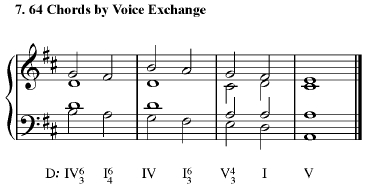
Rather along the same lines as passing 6/4 chords above a stationary bass, here the 6/4 chords have been produced by a voice exchange in the outer voices. You may safely assume this section of the chapter as padding. The section that follows is also padding, so we’re skipping it.